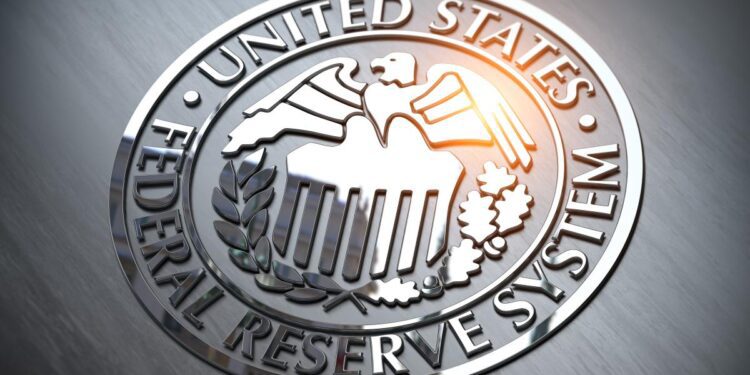The current discussion regarding Federal Reserve policy revolves around whether the Fed ought to implement cuts in between meetings or during September, and to what extent.
This debate should extend further to address the opportunity Chair Powell has at Jackson Hole to reclaim narrative control and set clear future policies…— Mohamed A. El-Erian (@elerianm) August 6, 2024
The Federal Reserve is in a delicate situation as investors expect significant interest rate reductions to prevent a looming recession. Traders are anticipating a half-point reduction in September followed by more aggressive cuts that could reduce the Fed’s short-term borrowing rate by 2.25 percentage points by the conclusion of next year. Steve Blitz, the chief U.S. economist at TS Lombard, remarked, “There isn’t a recession now, but one is becoming increasingly likely by year-end if the Fed does not intervene.” He predicts that the process would start with a half-point reduction in September, indicated in late August.
From this morning’s @opinion article (link below) on why “The Fed Should Resist Placating Markets.”https://t.co/6feK9zwIXG#economy #markets #FederalReserve #investing #investors #econtwitter pic.twitter.com/eC57EQGN7p
— Mohamed A. El-Erian (@elerianm) August 6, 2024
Citigroup economist Andrew Hollenhorst pointed out, “The unfortunate truth is that various data support what the increase in the unemployment rate is now clearly indicating — the U.S. economy is at best at risk of sliding into a recession and at worst may already be there.” He anticipates that upcoming data will affirm a persistent slowdown, making a half-point cut in September likely. Even though the job market continues to expand and stock market averages hover around record levels, an emergency cut before the Sept. 17-18 Federal Open Market Committee meeting appears improbable.
Current Market expectations for Fed Rate Cuts…
-Sep 18, 2024: 50 bps cut to 4.75-5.00%
-Nov 7, 2024: 25 bps cut to 4.50-4.75%
-Dec 18, 2024: 25 bps cut to 4.25-4.50%
-Jan 25, 2025: 25 bps cut to 4.00-4.25%
-Mar 19, 2025: 25 bps cut to 3.75-4.00%Video: https://t.co/PU3gn1fTbD pic.twitter.com/xuqDaimCyG
— Charlie Bilello (@charliebilello) August 7, 2024
Meanwhile, Bank of America economist Michael Gapen articulated, “If the inquiry is whether the Fed should consider an intermeeting cut at this moment, our historical perspective suggests a resounding ‘no, not even close.'”
My latest @WSJopinion on where the Fed is and where it should be going, they gave it the apt subtitle: “Jerome Powell must be wishing he had cut rates last week. He still has time to catch up to the market.”https://t.co/aCvyjUVeD9
— Jason Furman (@jasonfurman) August 5, 2024
The Fed is projected to lower rates at a rapid pace similar to that of the increases witnessed from March 2022 to July 2023.
Fed contends with recession anxieties
This trend may commence later this month as Fed Chair Powell is set to deliver a key policy address at the Fed’s yearly gathering in Jackson Hole, Wyoming.
Joseph LaVorgna, the chief U.S. economist at SMBC Nikko Securities, predicts that the Fed will implement a reduction of 3 full percentage points by the conclusion of 2025, which is more aggressive than the prevailing market estimates. He maintained, “Go big or go home. The Fed has clearly indicated that rates are excessively high.
Why would they be sluggish to ease the tightness?”
Goldman Sachs has recently upped its recession probability to 25% from 15%, citing that the Fed possesses ample capacity to decrease rates if needed. However, any significant shifts in the data, such as unexpected declines in non-farm payrolls, could soon reignite recession concerns. Economist and strategist David Rosenberg, founder of Rosenberg Research, commented, “The Fed is as out of sync with the economic landscape now as it was behind the inflation curve during 2021-2022.” He added that the heightened anticipation for rate reductions “resembles a genuine recession scenario, as the Fed has rarely acted this way without a formal economic downturn ongoing.”
As market participants remain vigilant regarding the Fed’s forthcoming actions, it is evident that the likelihood of a recession heavily depends on the Federal Reserve’s capability to make timely and decisive moves.


